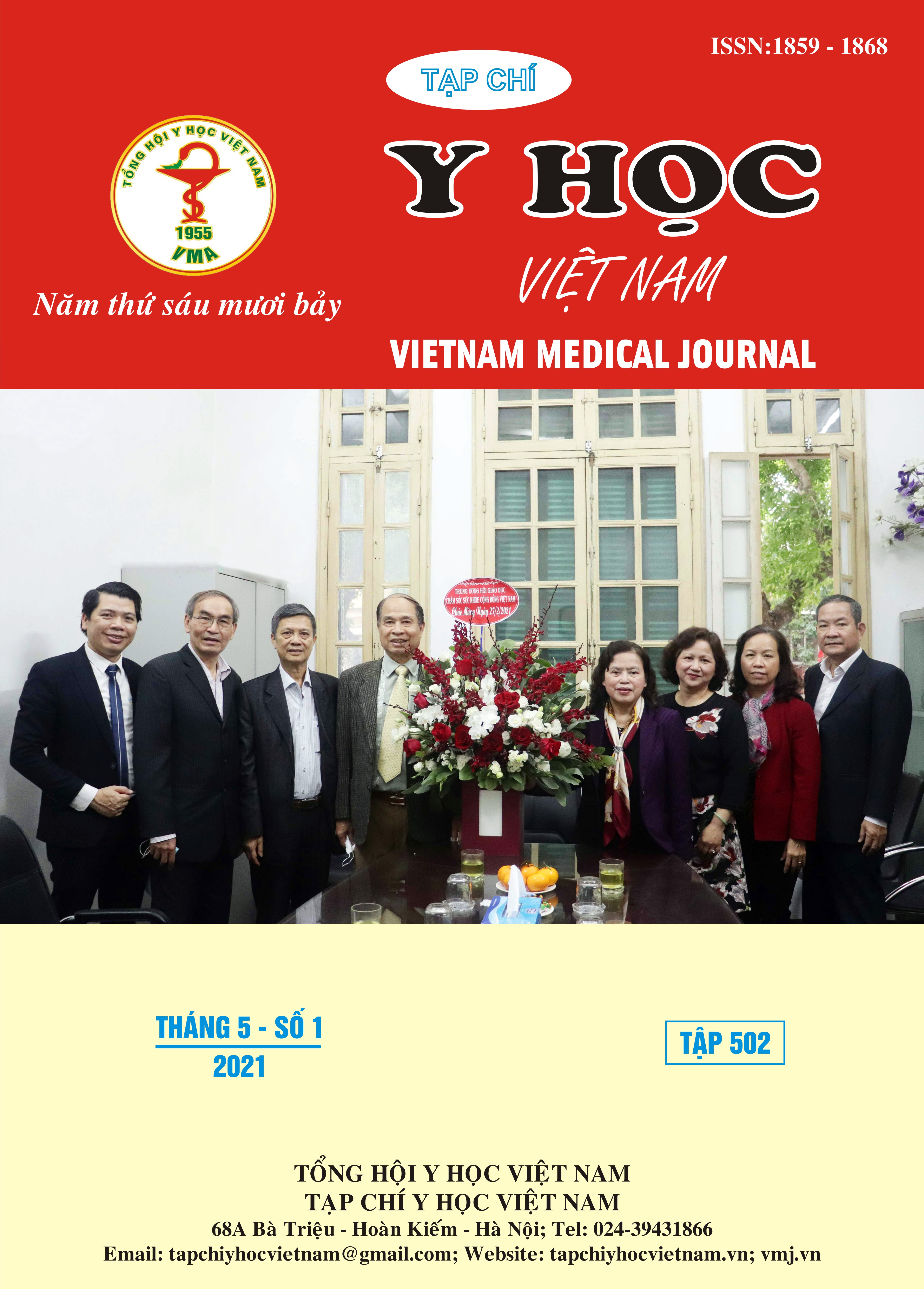ASSESSMENT OF THE BREAST PAPILLARY LESSIONS AND SOME CLINICOPATHOLOGICAL FEATURES
Main Article Content
Abstract
Papillary lesions only account for 2% of the mammary lesions, but this lesion ownes many features that can confuse between benign, atypical and malignant characteristic in the diagnosis, classification and treatment. Purpose: Comment on some clinical features, histopathology and immunohistochemistry of papillary lesions in breast. Methods: 79 patients with papillary lesion were classified in histopathological subgroups by WHO classification, reviewing some clinicopathological characteristics, IHC stain of Ki67 marker. Results: 100% intraductal papilloma has a low Ki67. Atypical papillary lesion group was seen in 1 case with a high Ki67 score (p <0.05). In the group of malignant papillary lesions, there were 5 cases with high Ki67, mainly seen in type of encapsulated papillary carcinoma (p <0,05). Conclusion: ADH and DCIS were more common in the group of papillary carcinoma than intraductal papilloma, and the likelihood of developing papillary carcinoma of the ADH group was 6.5 times higher than in the lession without ADH.
Article Details
Keywords
Breast Papillary lesion, Clinicopathological feature, Immunohistochemistry
References
2. S.R L., Elis I.O, S.J S. và cộng sự. (2012), WHO Classification of Tumors of the Breast, IARC, Lyon, France.
3. Kraus F.T. và Neubecker R.D. (1962). The differential diagnosis of papillary tumors of the breast. Cancer, 15(3), 444–455.
4. Tokiniwa H., Horiguchi J., Takata D. và cộng sự. (2011). Papillary lesions of the breast diagnosed using core needle biopsies. Exp Ther Med, 2(6), 1069–1072.
5. Bhargava, R, N.N E., và Dabbs D.J (2010). Immunohistology of the Breast. Diagnostic Immunohistochemistry: Theranostic and genomic application. Sauders, USA, 763–819.
6. Fu C.-Y., Chen T.-W., Hong Z.-J. và cộng sự. (2012). Papillary breast lesions diagnosed by core biopsy require complete excision. Eur J Surg Oncol J Eur Soc Surg Oncol Br Assoc Surg Oncol, 38(11), 1029–1035.
7. Pathmanathan N., Albertini A.-F., Provan P.J. và cộng sự. (2010). Diagnostic evaluation of papillary lesions of the breast on core biopsy. Mod Pathol Off J U S Can Acad Pathol Inc, 23(7), 1021–1028.
8. Tạ Thị Minh Phượng, Âu Nguyệt Diệu, và Hà H.T.N. (2015). Đặc điểm giải phẫu bệnh, hóa mô miễn dịch trong tổn thương dạng nhú tuyến vú. Học TP Hồ Chí Minh, 19.
9. Page D.L., Salhany K.E., Jensen R.A. và cộng sự. (1996). Subsequent breast carcinoma risk after biopsy with atypia in a breast papilloma. Cancer, 78(2), 258–266.


